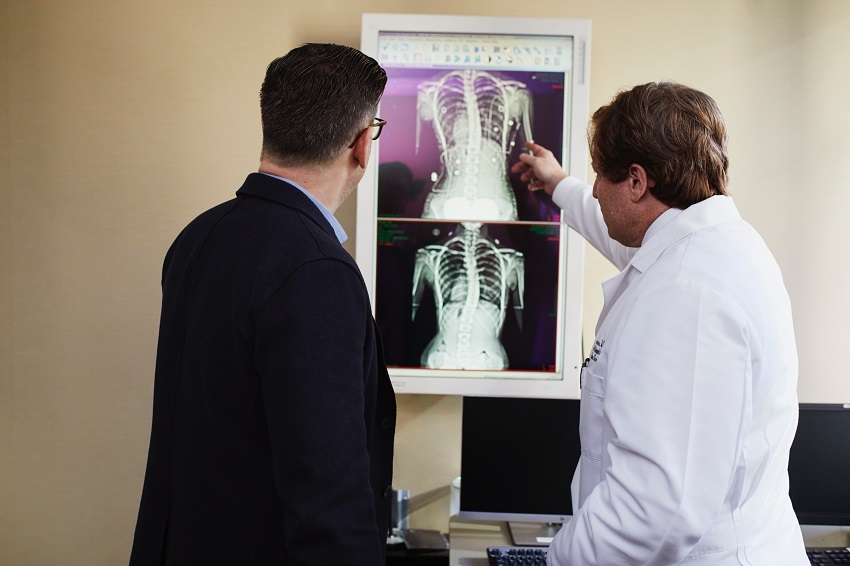Medical imaging is one of the most fascinating healthcare discoveries of the modern era – and it is always changing! The constant advancements that the healthcare world is making to improve our ability to diagnose and treat patients are nothing short of incredible. At Radius, we are bonafide healthcare fanatics and we are always asking ourselves, ‘what are the latest trends in medical imaging?’
From artificial intelligence to virtual reality, here are a few of our favorite recent medical imaging trends, and some highly anticipated advancements.
Artificial Intelligence in Medical Imaging
Artificial Intelligence (AI) in the world of healthcare is on the rise – and is projected to become a major resource in the field of medical imaging technology. AI is being used for both processing images and interpreting them – faster and more accurately than humans.
Machines are being built to detect certain patterns in scans that don’t require the diagnostic opinion of a radiologist. Machines with the ability to do this are performing what healthcare professionals refer to as ‘deep learning’. They are essentially working with a set of manufactured neural networks which allow them to learn by example, like humans do. If they see the same thing a certain number of times – for example, a certain abnormality in a brain scan – they can eventually learn how to recognize it on their own.
While some may still feel more comfortable with a human interpreting their medical records, this advancement is certainly offering overworked technicians a bit of help!
Speeding Up Medical Imaging Procedures
One of the least appealing things about medical imaging, for patients and healthcare professionals alike, is the time it takes to perform and interpret some of the scans. Reducing the time for MRI scans, which can last as long as an hour, to just a few minutes, means the world for people with claustrophobia, young children, or people who have difficulty staying still for long periods of time.
Traditionally, MRI scanners collect far more data than necessary in order for a technician to interpret it manually. AI lends another helping hand here, because machines can gather only the necessary data and interpret it themselves. Speeding up this process makes a huge difference when it comes to patient comfort, as well as increases the volume of scans that are able to be performed daily. Reduced scan times also mean less radiation exposure, which is a significant perk for people who need scans done regularly.

Virtual Reality in Medical Imaging
Virtual reality is all the rage in the entertainment world, especially in movies and video games, but its applications in the medical world are gaining traction.
Technology is being developed in a study for the interventional radiology sector which allows technicians to look at real-time, 3D images of blood vessels rather than trying to interpret 2D, black and white images.
Radiology professor Wayne Monksy sums it up like this: ‘The purpose of the study is to demonstrate the feasibility of using a catheter with electromagnetic sensors projected onto a VR headset to see and steer the catheter through the anatomy to certain blood vessels.” This would make the process much faster and more efficient, two of the top priorities in the medical world.
Nuclear Medical Imaging
Another trend in medical imaging that is making waves is nuclear imaging. This type of procedure involves injecting a small amount of radiopharmaceuticals into the body in order to pinpoint exactly where an internal pain or problem is coming from.
The radioactive material flows through the body and concentrates and changes color where the problem is, which can then be seen on a body scan. For instances such as back pain, which could be caused by a plethora of different things (joints, muscles, tumors, trauma, etc.), this kind of imaging proves particularly useful. By identifying the localized issue, it can be treated with more effectiveness, rather than taking shots in the dark and potentially prolonging the pain.
Changes to the Patient Experience
Improving the overall patient experience is not exclusive to the world of medical imaging; healthcare as a whole is becoming much more patient focused. For the world of medical imaging, radiology professor Ella Kazerooni envisions ‘Radiology 3.0’, which is built on the core concepts of respect, information sharing, participation and collaboration between healthcare professionals and their patients.
It can also be suggested that with the various improved technological aspects of medical imaging, a lot of the freed-up time could be better spent with patients, giving them quality involvement in their healthcare experience.
Medical imaging is clearly a very exciting field to be a part of. Are you on the hunt for a new job? Radius can help you find the perfect position, like this one in Illinois or this one in New Mexico! Reach out to one of our recruiters today to get started.

